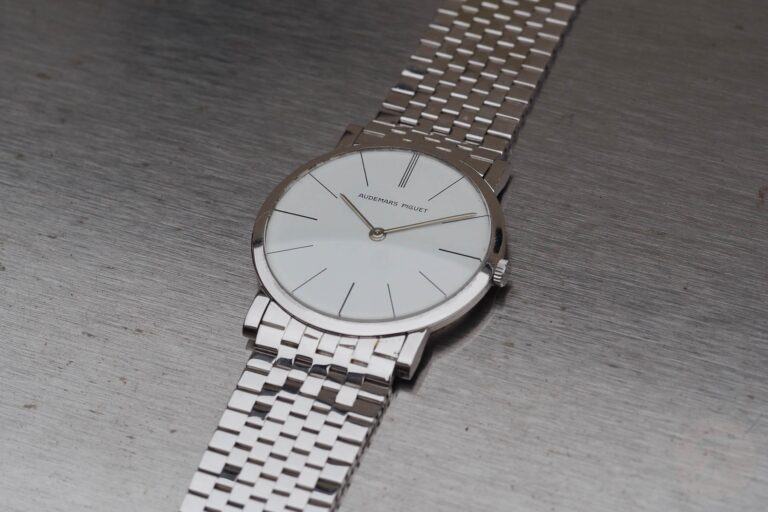If you asked 100 people what the first word that comes to mind when they hear “Audemars Piguet” is, almost everyone would say “Royal Oak.” This shows how popular Gerald Genta’s groundbreaking 1972 design has become. However, before and after the launch of the Royal Oak, Audemars offered a completely different type of watch that accounted for the majority of its sales. The “Ultra-Thin” was often equipped with a 2003 mechanical caliber and was an essential, if not essential, dress watch.
Patek Philippe receives the most accolades for its vintage products. The brand influenced the design of watches and movements and produced a vast catalog of complications. Other brands such as Audemars and Vacheron dabbled in more complicated watches, but focused on dressier models and bejeweled pieces for women. Although they weren’t jewelers with watchmaking as a sideline, scrolling through ads from the 1950s shows that brands like AP were focused on exclusivity. Oddly enough, and through no fault of Patek, Audemars Piguet watches were less common and often more expensive.
thin movement and thin watch
It’s fun to read about the early days of a brand that is now considered a well-run, highly specialized industry giant. The AP Chronicles article reveals the strong ties between watchmakers and suppliers in the Vallée de Joux. For this reason, Audemars, LeCoultre, and Vacheron ultimately collaborated to develop an ultra-thin movement. But let’s briefly explain the pursuit of thinness.
Many people prefer thinner watches, but the initial rationale for chasing tenths of a millimeter is much simpler. Creating thin movements, especially a century ago, allowed watch companies to demonstrate their technological prowess. If a movement can deliver precision and reliability while offering an ultra-thin design and fine finishing, why wouldn’t it?
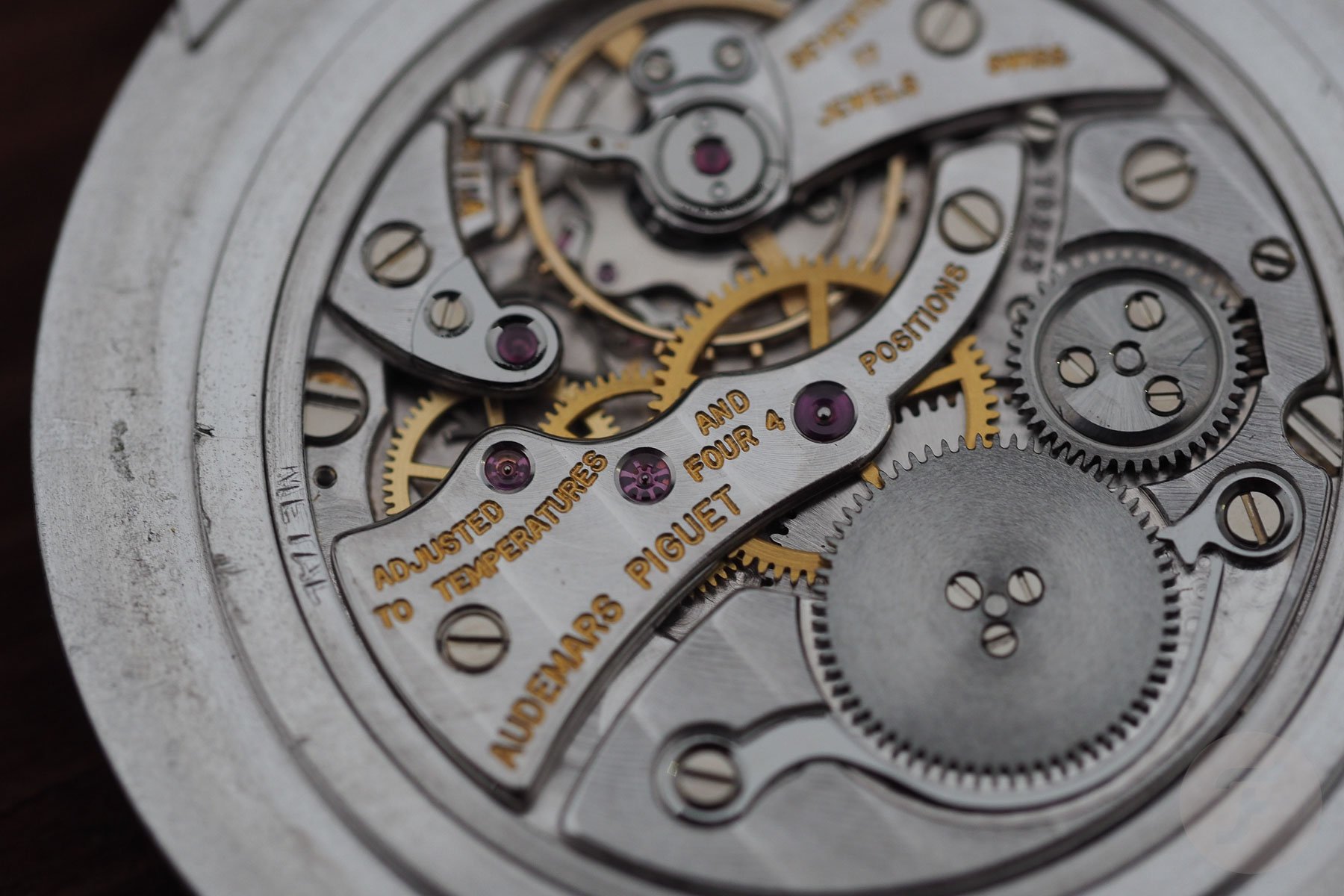
caliber 2003
In 1938, Audemars Piguet introduced the world’s thinnest wristwatch movement. At just 1.64 mm thin, the 9ML follows the brand’s record-setting 1.32 mm thick pocket watch movement. The hand-wound caliber was amazing, but not very robust. Still, Audemars Piguet worked with Jaeger-LeCoultre and Vacheron Constantin in the early 50s to make the 9ML suitable for serial production. As a result, Caliber 2003 was born in 1953. Before we get into details about the movement and the long-running watches that used it, let’s take a look at some articles and advertisements from the time.

Image: Shelby Sentinel — March 5, 1963
A little about Audemars Piguet
It’s fun to travel back in time to see how brands were perceived 70 years ago. Audemars is now grouped with Patek, Vacheron, and other Swiss luxury watchmakers. In the 50s, brands were viewed a little differently. There’s no doubt that Patek is special, but AP was also really special. After researching old newspaper advertisements and articles, I learned that Audemars Piguet specialized in women’s jewel-set watches. For me, this brand has created a slight wonder. As the 1963 blurb says, the AP was the world’s most expensive watch.
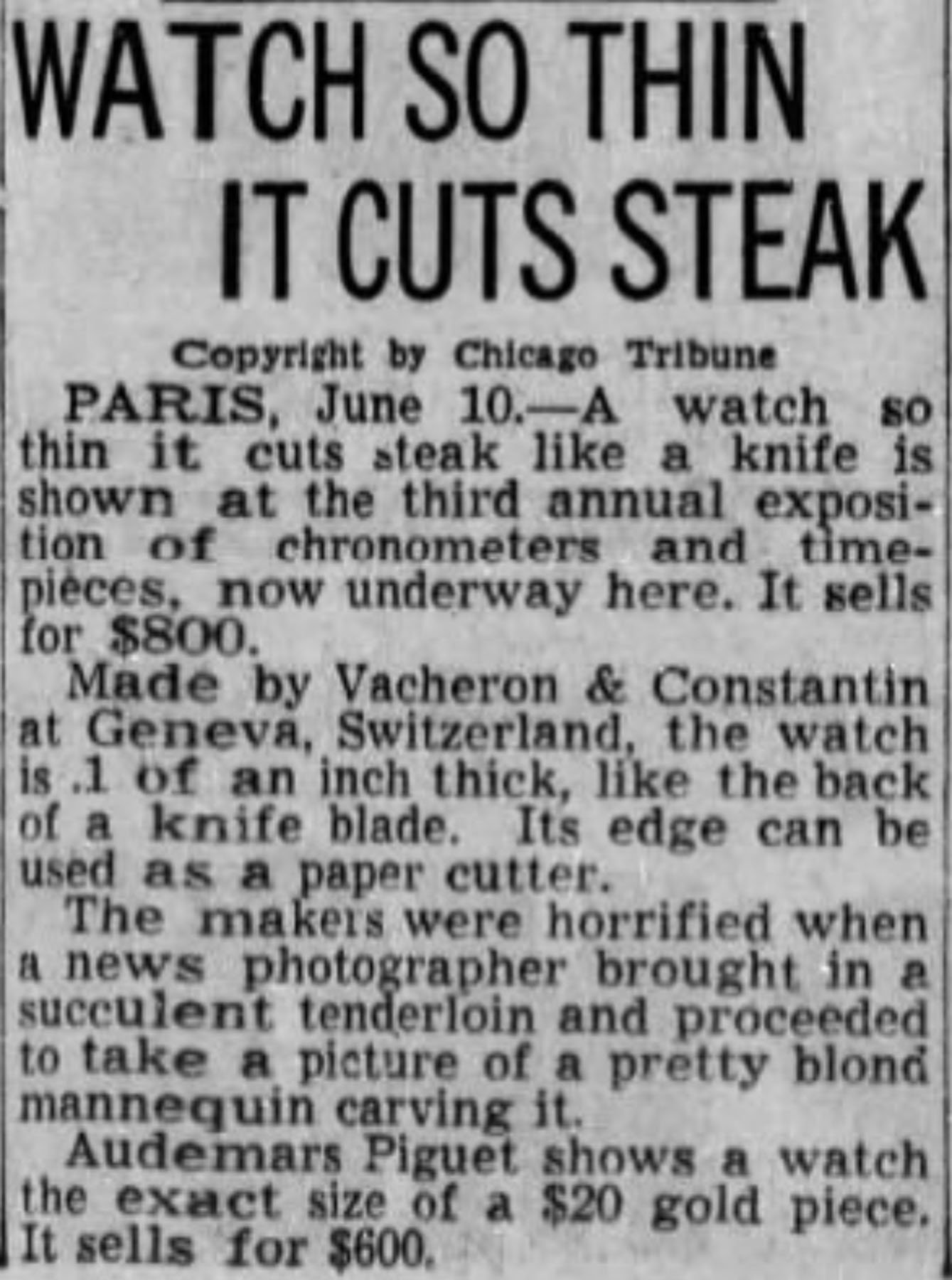
Image: Chicago Tribune — May 11, 1953
The media paid attention to the thin watch. The 2003 movement debuted in 1953 and was probably used as a steak-slicing publicity stunt.
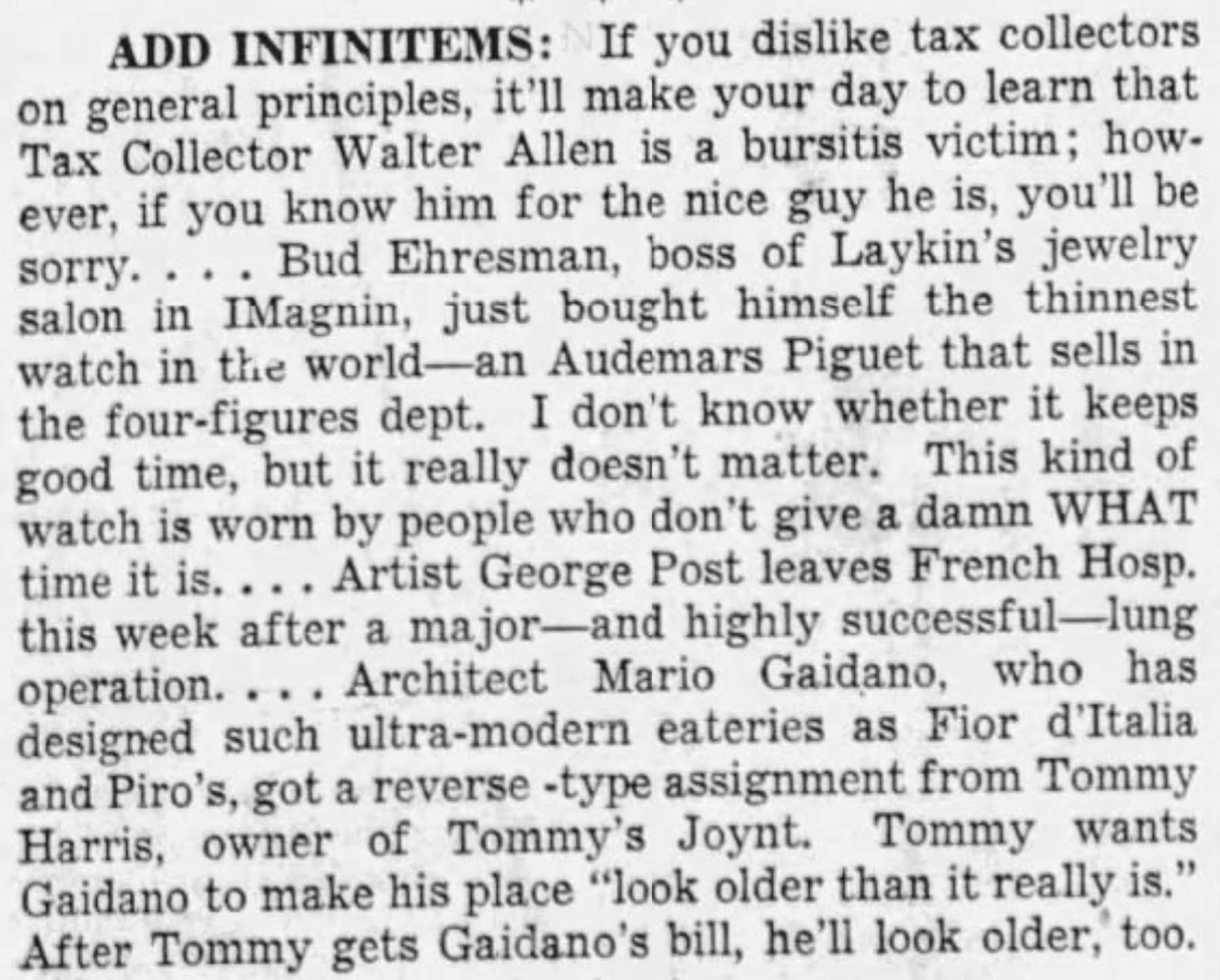
Image: San Francisco Examiner — March 15, 1955
It also shows that the thin Audemars Piguet was seen as an expensive luxury item. It was sarcastic and very stylish!

Image: Tucson Citizen — February 26, 1955
A 1955 advertisement touts Audemars Piguet as the world’s thinnest wristwatch. As we will see, AP retained this title (perhaps with the addition of the word “mechanical”) for the next 50 years.
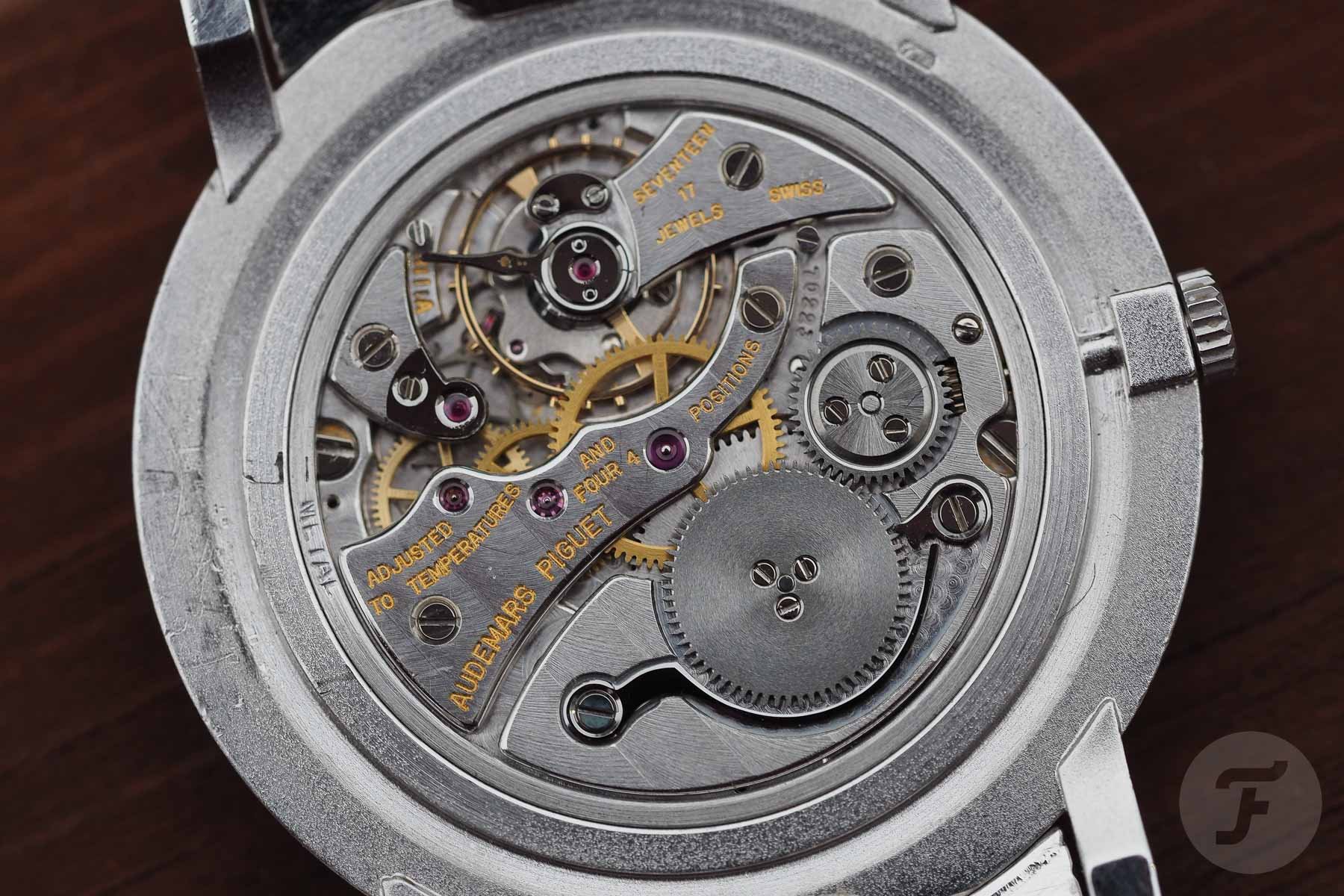
back to movement
Audemars Piguet had exclusive rights to the use of the 2003 caliber for the first two years. From 1955 onwards, Vacheron and JLC were also able to include it inside their watches. Apparently, JLC sold it as the 803 caliber but did not use it in their watches.
The 2003 may have fewer bridges and be stiffer, but it’s still a beautiful movement. There are a lot of bridges compared to modern movements! It has a finish that is typical of a high-class movement, such as the angle and engine rotation. Specifications-wise, this power plant has a frequency of 18,000vph and a power reserve of 36 hours. These specifications are not particularly appealing today, but let’s not forget that the movement is only 1.64 mm thick.
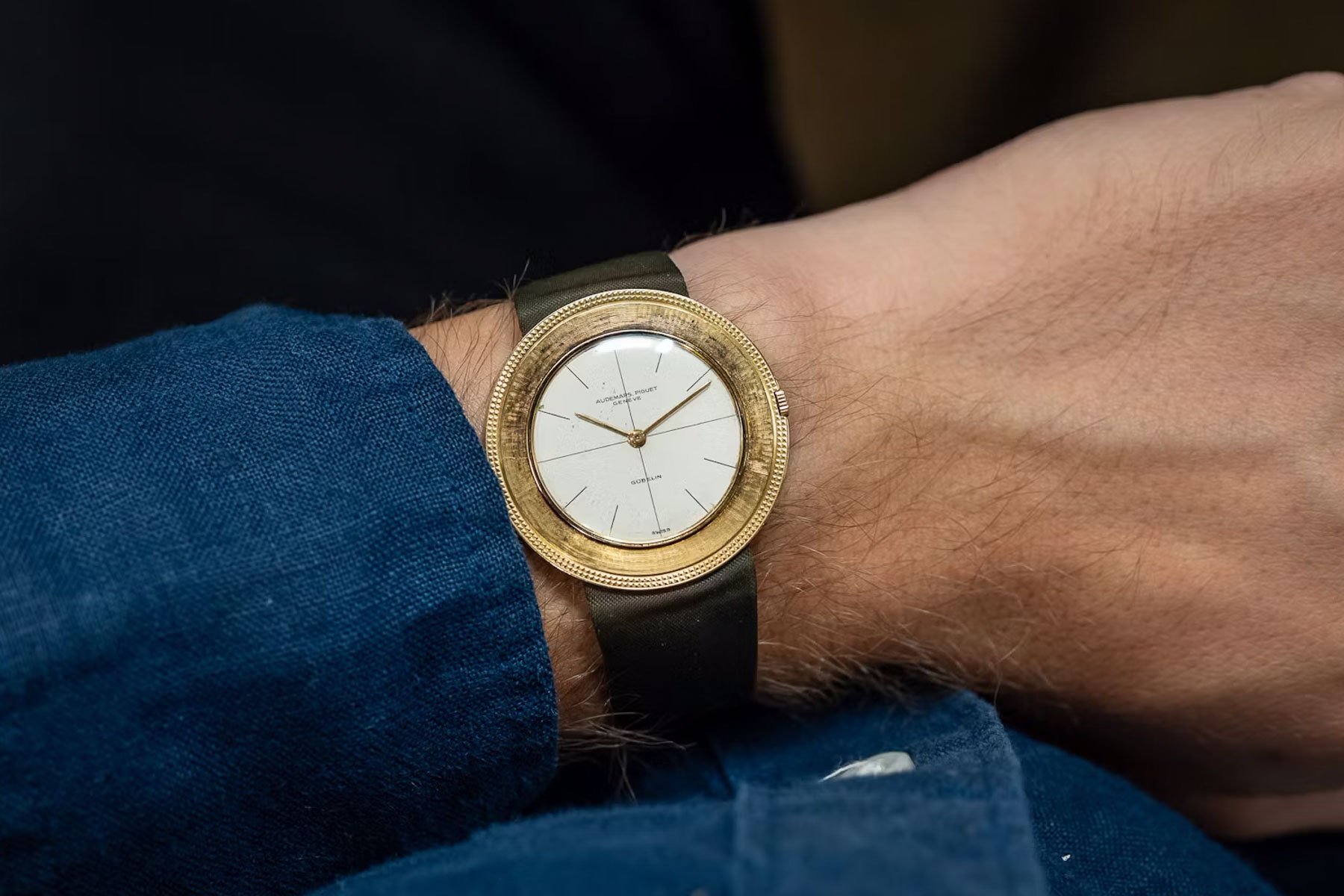
Image: Hodinkee
Notable applications
Caliber 2003 was used in several applications. Perhaps the most famous is the ultra-thin “Disco Volante.” These 36mm pieces are only 5mm thick and must have looked avant-garde for their time. Today, these watches are highly sought after and command high prices. Be sure to read Tony Traina’s great overview of these models on Hodinkee. Audemars Piguet briefly produced the Disco Volante model, but another model became the brand’s top seller for several decades.
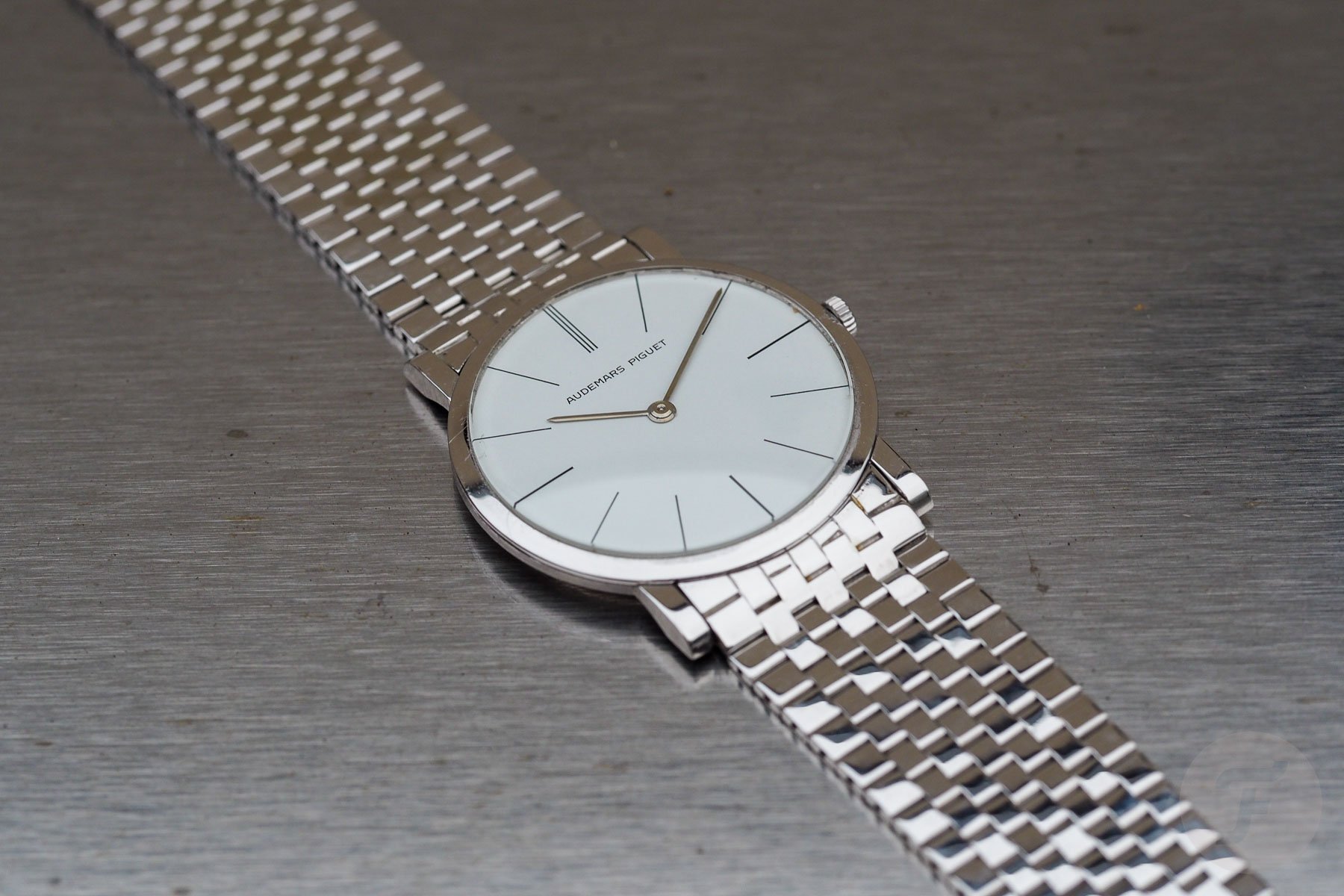
Audemars Piguet 5043BC Ultra Thin
When I visit my home in South Florida, I do my best to fight turnpike traffic and visit Wind Vintage in Palm Beach. Before I leave for America, I always check the store’s website and silently pray that nothing steals my heart. Earlier this year, I was preparing for a trip and underwent this ritual. Thankfully, nothing seemed “essential” to me. A week later, everything fell apart when I faced the Audemars Piguet 5043BC Ultra Thin.
I’ll admit I was intrigued when I saw AP for sale a week ago. But since it was only 31.5mm in diameter, I foolishly ignored it. I also wrote that it was a run-of-the-mill ’50s dress watch with stick lugs. Yes, this watch was created by a highly regarded manufacturer, but it just didn’t manage to jump off the page. How wrong I was…
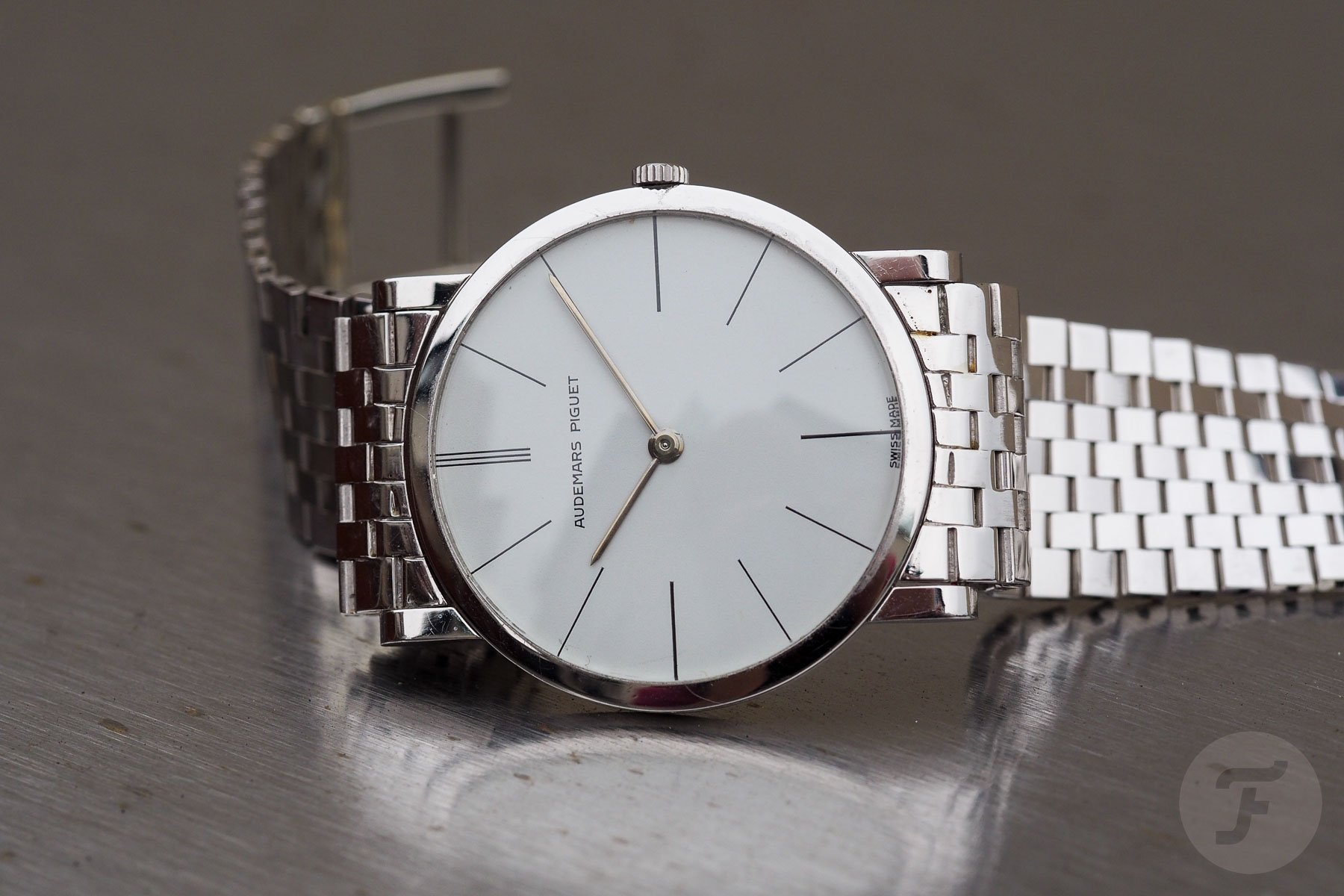
Monitoring is very important for APs
The Audemars Piguet 5043BC was launched in the early ’50s with the 2003 caliber and was produced until the ’60s with few changes. A similar model with a more modern dial survived into the early 2000s. To this day, it remains one of the thinnest watches ever made. As a side note, the name Ultra-Thin is not official, but many people use it to identify these watches. Movement and case design also formed the backbone of the Audemars Piguet range for decades. After the Royal Oak debuted in 1972, Ultrathin remained an important part of the collection.
The 5043BC Ultra-Thin is a deceptively simple watch. I say this because I passed it off as a boring stick-on dress piece, but it’s so much more than that. Before going into details, it is important to mention that the design of this watch is primarily by Gerard Genta. Although I have not seen any evidence of this, Genta frequently worked with AP during this period. Regardless of who designed the watch, it’s both a subtle masterpiece and a lesson in proportionality.
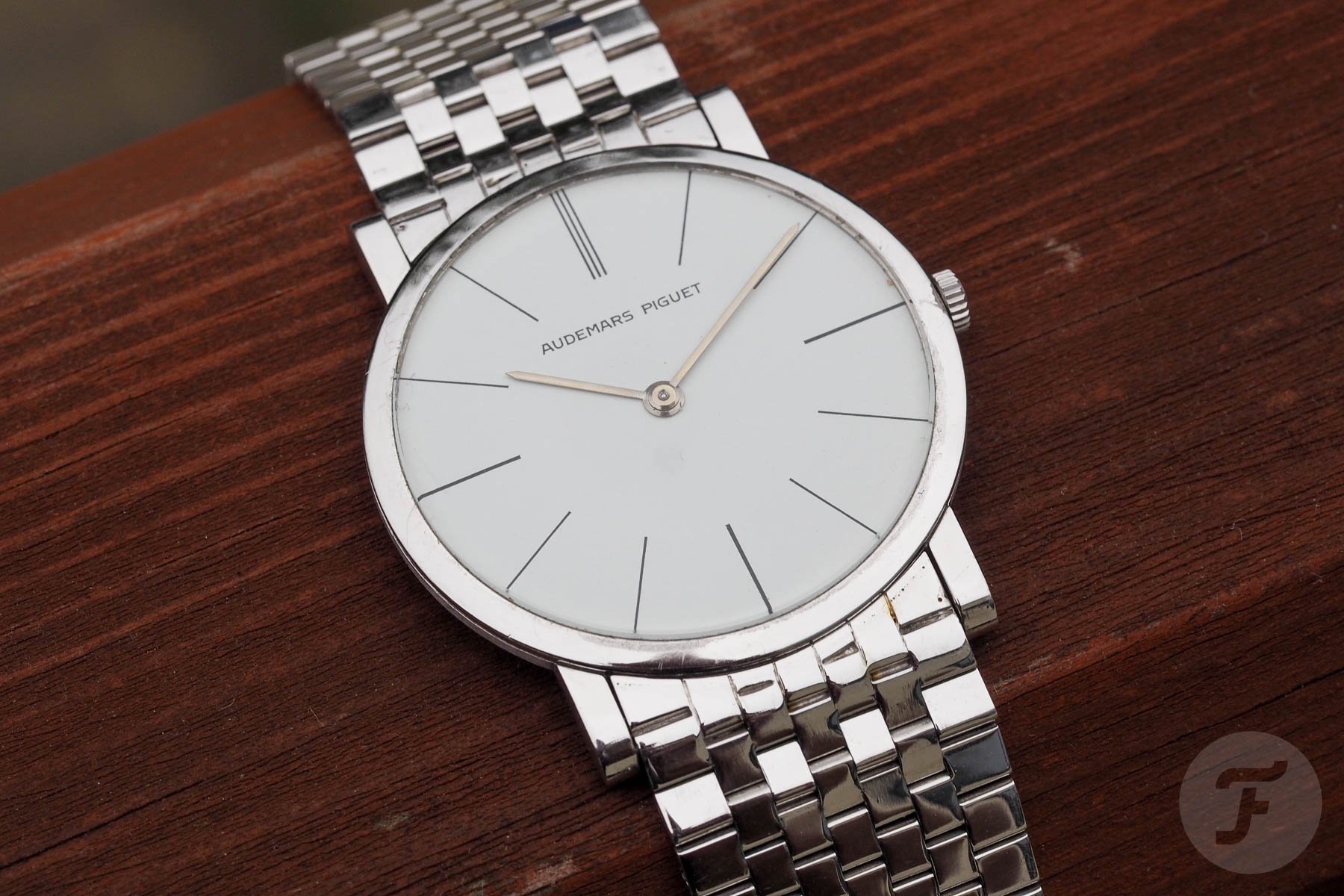
A case with perfect proportions
I’ve spent some time thinking about the 5043BC Ultra-Thin and what makes it different from thousands of similarly styled watches. In a nutshell, the 5043BC looks solid and masculine despite its relatively small size. While other watches look long and thin, the thick lugs and relatively thick bezel give it a visually solid feel. The basic flat-top crown also retains its strong shape.


very thin
For many people, it’s the side view of the 5043BC Ultra-Thin that grabs their attention. This watch is incredibly thin, measuring approximately 5 mm from the surface of the caseback to the top of the gradually warped mineral crystal. The tip of the lug is barrel-shaped and the bottom is flat. Look at the accuracy of the three-part case. 70 years ago there was amazing metal working.
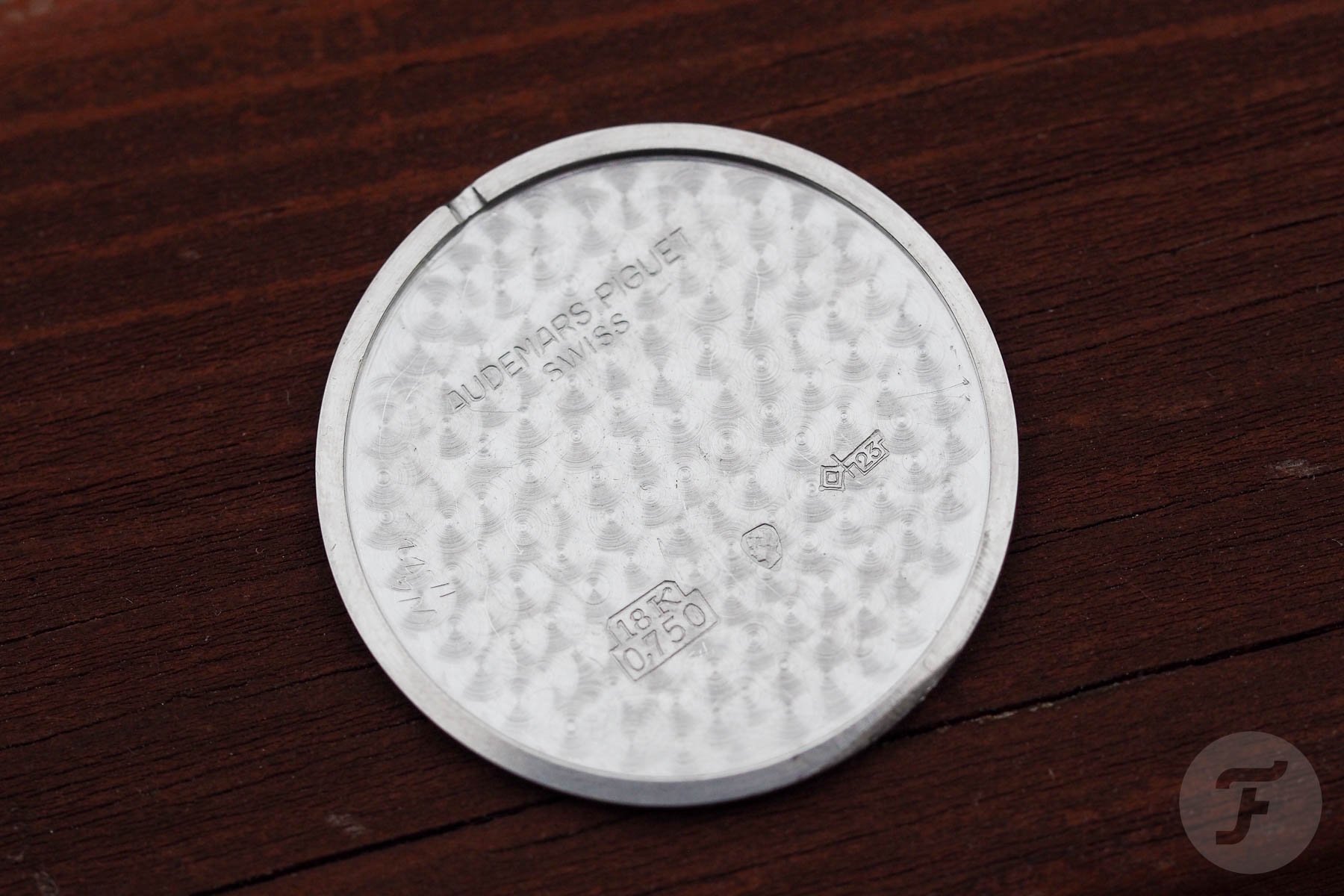
As for the case manufacturer, it was none other than Eggly & Cie. of Geneva. #23 in Quay Poinçon de Maître in Geneva can be cross-referenced here. Eggly was one of Switzerland’s premier case manufacturers, supplying companies such as Audemars, Vacheron, and Patek.


Perfectly designed dial
Disco Volante models often have quirky dials, but the 5043BC Ultra-Thin dial is the definition of simple. The white lacquer dial is printed with black lines for the indexes. The lines at 3, 6, and 9 o’clock are thicker, and the index at 12 o’clock is made up of two parallel lines. The only other details are the brand signature on the top half and “Swiss Made” on the bottom. This dial does not have the “Geneve” engraving, but Eric explained that this was probably a design difference from 1956 onwards.
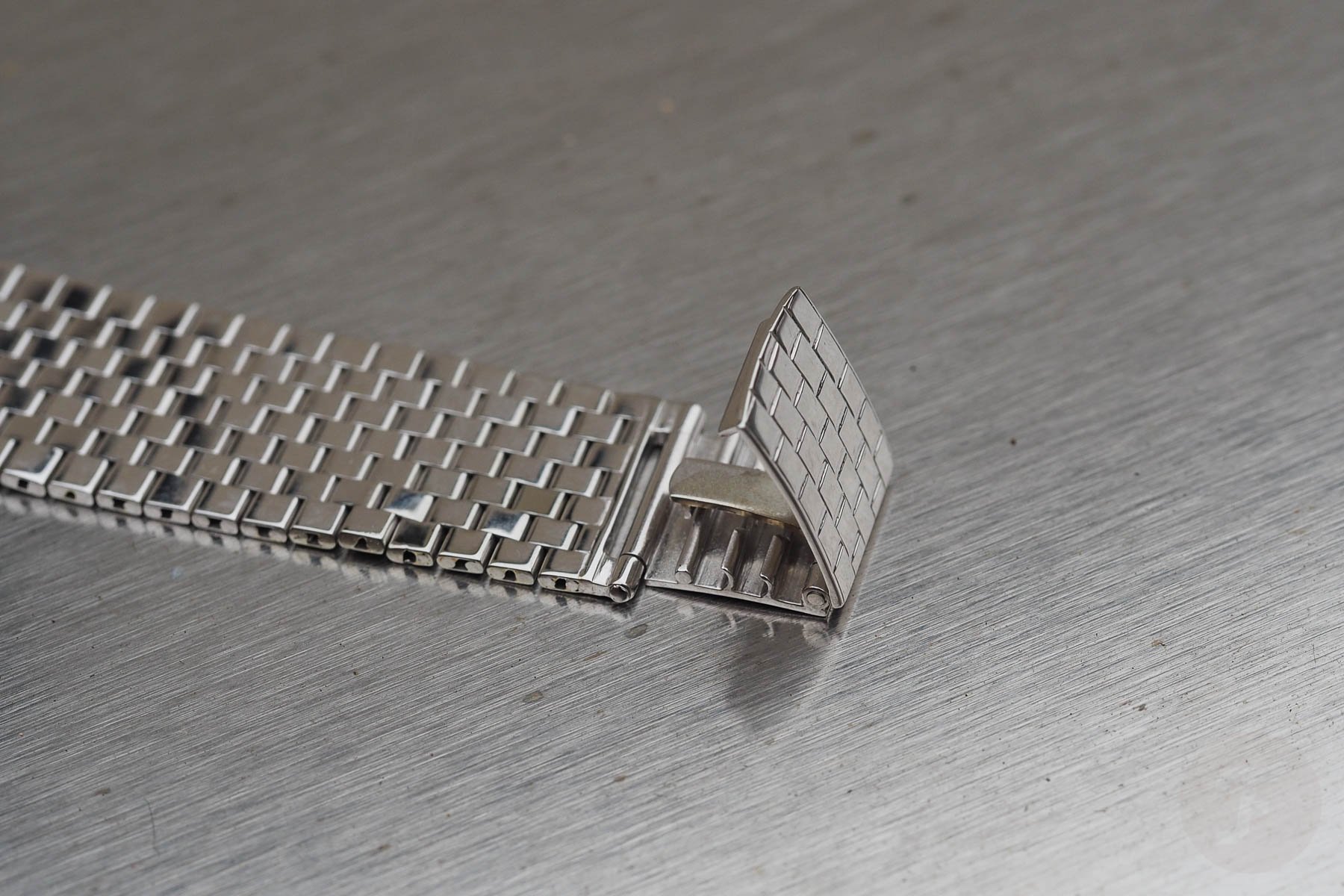
the bracelet sold me
When I visited Wind Vintage, I asked to see the Audemars Piguet 5043BC Ultra Thin. I was surprised by the design and thinness of the case, but the bracelet made me reach for my wallet. These watches came standard with a black strap and pin buckle, but a bracelet was also an option. Eric explains that Audemars Piguet offered a yellow gold version on a mesh bracelet, but also a white gold model on a gay flères bracelet with brick-like links.
I’ve held, touched, and worn many bracelets over the years, but this is without a doubt the most exquisite piece of jewelry making I’ve ever come across. The flexibility and detail are unparalleled. I would love to see a brand make something like this today if I could, but I hate to see the price. The bracelet starts at 18mm and tapers to 16mm wide towards the clasp. Indeed, it is short, which is why Eric sold it from his collection. It features a nice snap clasp and a secondary clasp underneath. There are protrusions for adjustment. This bothered Eric because the longest setting shows skin. As long as you don’t drink too much cask ale, you can even wear it in its tightest setting!
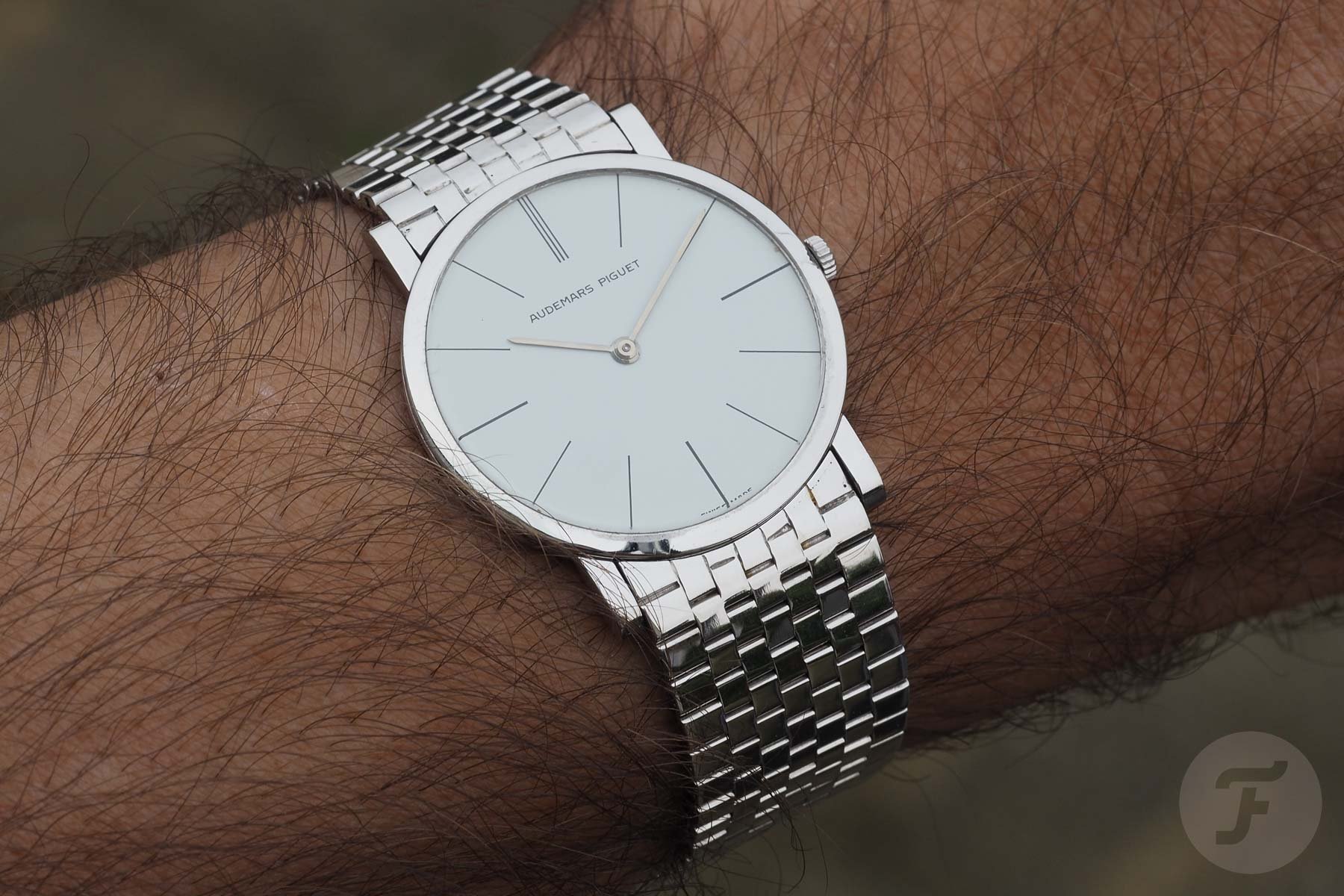
How do you wear it?
If the 31.5mm diameter turns me off, consider going back. The 5043BC Ultra-Thin is not a very big watch, but it is very deceptive. Lug to lug is approximately 36mm, but extends to 41mm on the bracelet. The first row of links after the lugs are not articulated (good practice considering durability), making the watch larger.
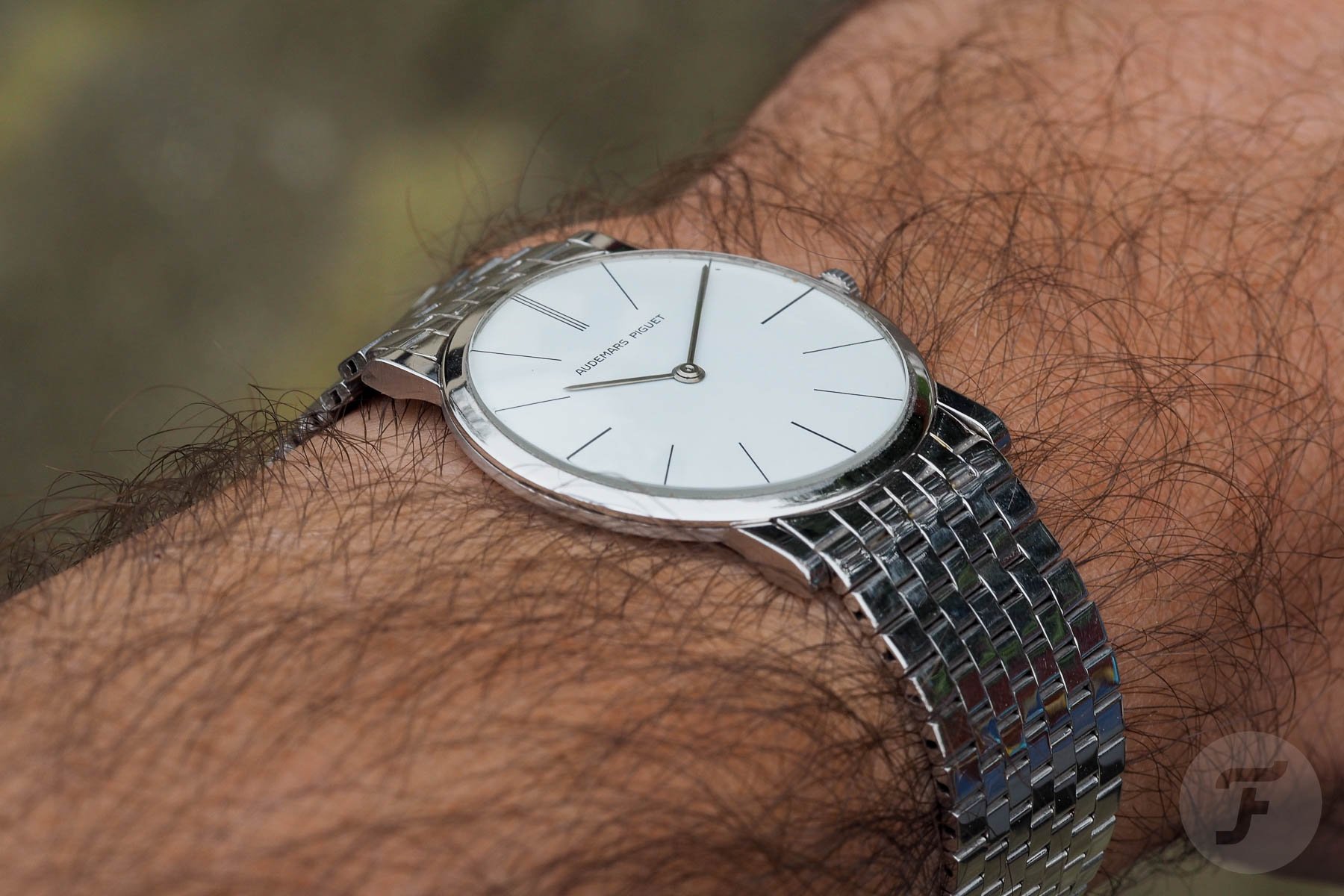
Like the Calatrava 570 I own, this watch has wide lug spacing. Most brands use a 16mm lug gap, which makes the watch look much smaller. The thick lug design also helps enhance this AP, along with the sparse white dial. My only complaint about wearing the Ultra-Thin is that it gets a little lost on furry wrists. I have no choice!
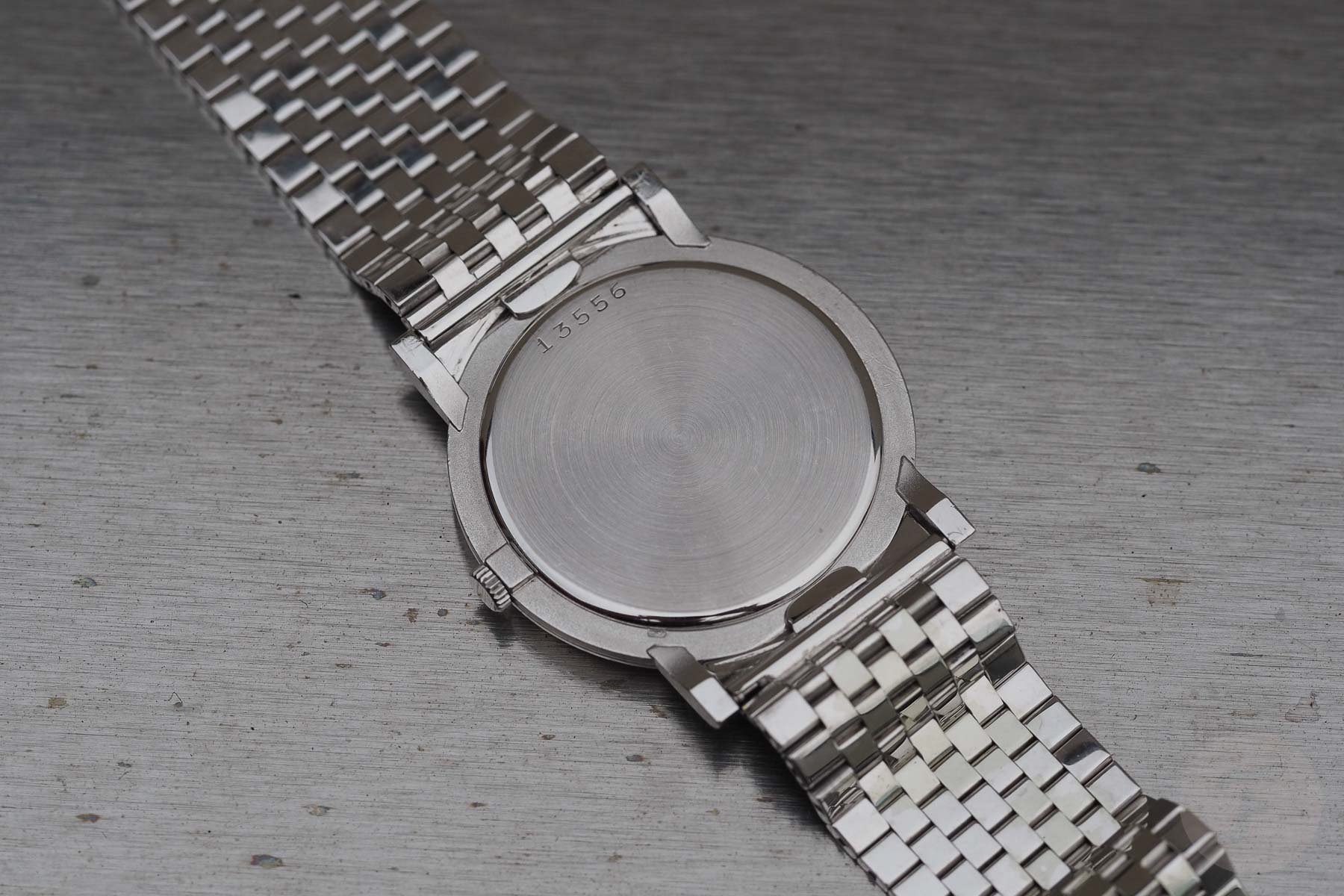
Search for 5043BC Ultra-Thin
Finding the Audemars Piguet Ultra Thin reference is relatively easy. Models with the 2003 movement are available on various online auction sites and dealer pages. Small dress watches are popular in Japan, so many watches have landed in Japan. New automatic versions are also becoming popular. However, the challenge is finding the good ones. Watches like the 5043BC Ultra-Thin are not water resistant. As a result, most watches have unsightly stains, refinished dials, or both. In fact, I rarely wear this watch. Because the thought of ruining this beautiful dial gives me pause. You don’t want to risk damaging it by washing your hands or stepping out of the air-conditioned shop into the humid London air.


If you find a nice strap, you can expect to spend around 4,000 euros. Add 50% more for a nice model of bracelet. Either way, it’s an amazing amount of watch for the money. Don’t walk away from sophisticated examples. Fortunately, I was able to find an undamaged product with sharp lug edges. Note the matte finish on the lugs and midcase. The serial number is engraved in the circular brushed center of the case back. Finally, the outer part of the media-blasted caseback should be distinctive.
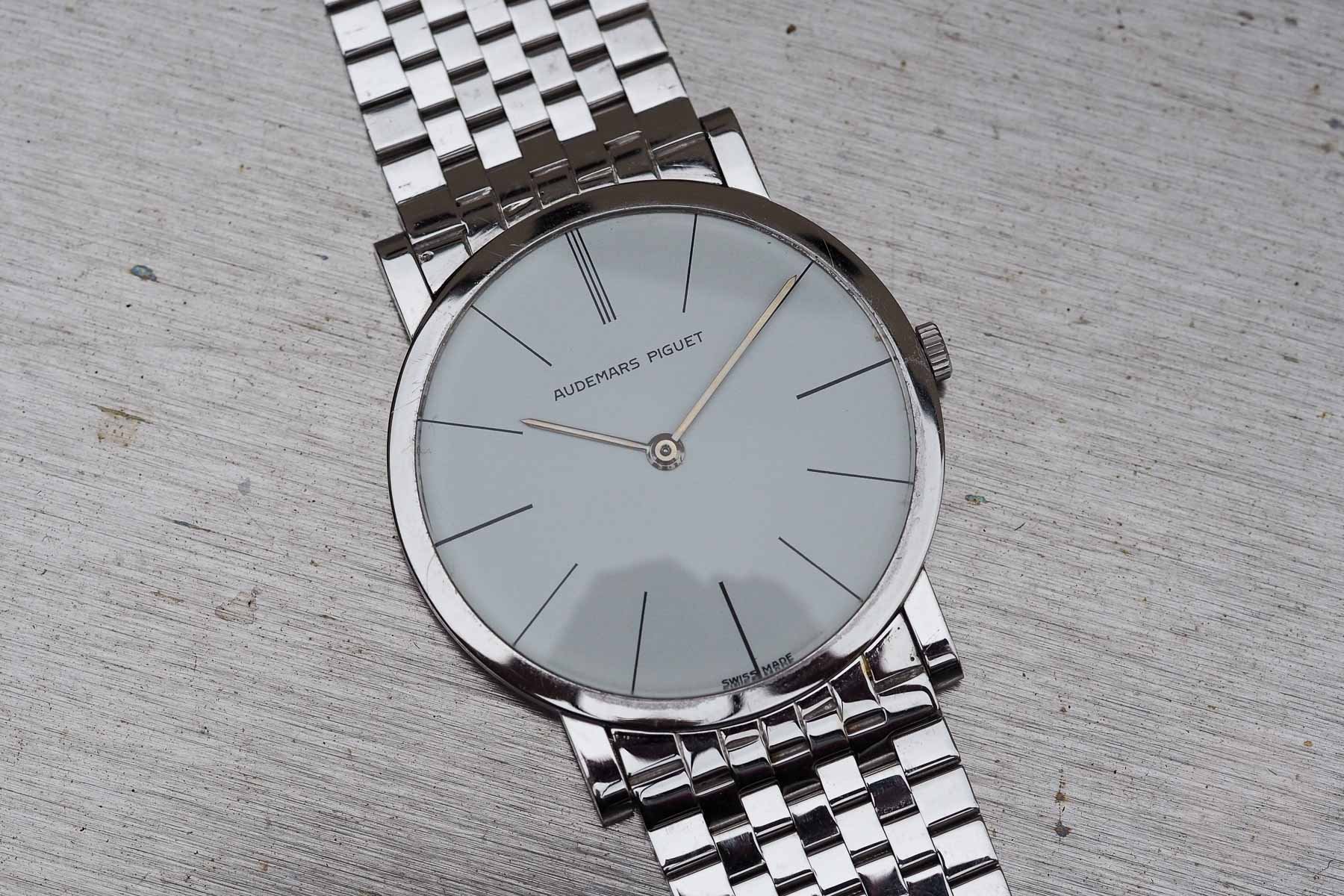
final point
The Audemars Piguet 5043BC is a stunning watch with a movement that has been in production for an incredibly long time. It is an important model for the brand and deserves consideration as one of the great dress watches in history. Furthermore, it shows that there was life in AP before Royal Oak. If you’ve tried it or remember seeing it for the first time, please let us know your thoughts and experiences.
